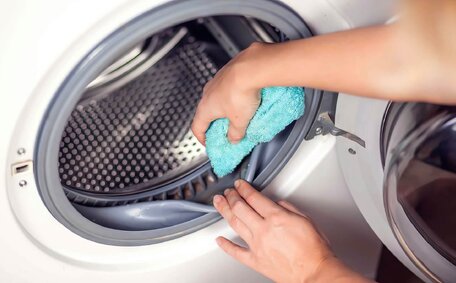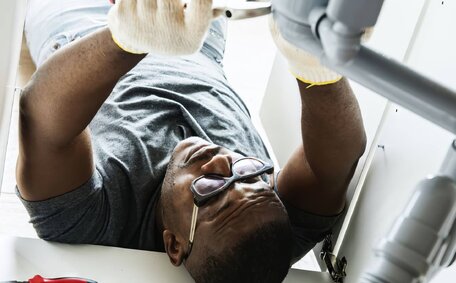How Gas Stoves Work During A Power Outage
Gas stoves can continue cooking during power outages, absent electricity. Here’s how they operate:
Older Gas Stoves
Older gas stoves retain a continuously lit pilot light that ignites the burners without the need for electricity. Simply turn the control knob to release gas, and the pilot light will ignite it.
Newer Gas Stoves
Modern gas stoves often have electric ignition systems with battery backup. This allows ignition during power outages where other electrically reliant appliances fail. Consult your owner’s manual to confirm if your stove includes this feature.
Stovetop Only vs Oven
With gas ranges, surface burners and gas fireplaces usually stay operational during outages, in contrast to the oven components. This is because the stove burners can be lit manually by the pilot light, while the oven may have an electronic ignition similar to some gas fireplaces.
Safety Tips
- Ensure your stove is designed for uninterrupted operation during power outages before attempting to use it without electricity. - Open windows for ventilation when heating with your fireplace or cooking on a gas stove with no exhaust fan. - Never use water heaters or gas ovens for indoor heating, as this can lead to a carbon monoxide hazard.
The key point is understanding how your appliances function without electricity and the protocols for their safe operation. Consult your owner’s manual or your local utility company for guidance on power disruptions and your stove’s functionality.
Understanding The Interlock Safety Feature
Like a freezer can continue to preserve food for hours, many newer gas stoves and ranges come equipped with an important safety feature called an interlock device. This feature safeguards certain stove functions during an outage, preventing hazardous use.
The interlock halts gas flow to the burners during a power failure. This helps protect your family from carbon monoxide poisoning, which can occur if gas appliances keep running without adequate ventilation during an outage.
Should the power fail while cooking, the interlock ensures the burners cease operation to prevent unsafe conditions.
Electronic ignition systems depend on electricity to spark and light the burners, tying them closely to power reliability. If no power is available, you would need a different method as it would be unsafe for the gas to continue flowing with no way to light it.
The interlock acts as a failsafe to cut off the gas in that scenario. While this safety feature prevents operation during a power outage, it ultimately protects homes and families from the threat of deadly carbon monoxide poisoning.
Confirming that contemporary gas stoves possess an interlock device is a vital step to ensure they work without danger during disruptions. It ensures the appliance won’t inadvertently emit hazardous fumes during an outage by attempting to function sans electricity.
Manual Lighting Without Electricity
If your gas stove does not have an electronic ignition system, You can manually light the burners to ensure they function during a power outage. Here are the steps for safe manual lighting:
- Ensure all stove knobs are in the off position before attempting to light them.
- Open a window or door near the stove to heat your space safely with proper ventilation.
- Hold an extended match or long lighter next to the burner you want to light. Maintain a safe distance with your face and hair from the burner to avoid accidents.
- Push in and turn the corresponding control knob to release gas to that burner. You should hear the gas start to flow and make sure to act before you run out.
- While continuing to hold the knob in, use your extended match or long lighter to ignite the gas at the burner.
- Once the burner ignites and stays lit, you can release the knob and adjust the flame as needed. Once lit, the burner should remain active.
- If the burner fails to light after 5 seconds, turn the knob off to stop gas flow. Allow any built up gas to dissipate before trying again.
- Repeat the process for any other burners needed.
- Never leave the stove unattended during manual operation, as you can get an unexpected flame outage.
The key is understanding how your gas appliances work and proceeding slowly and safely. Open the space for ventilation, keep flames away from your face, and turn the gas off if it fails to light within a few seconds.
Avoid Using The Oven
It is generally not recommended to use the oven portion of a gas range during a power outage. This particularly applies to newer models that have electronic ignition systems needing electrical power for safe operation.
Without power, the oven may fail to ignite at all. More concerning is the possibility that gas will continue flowing to the oven without igniting. This can lead to a dangerous buildup of carbon monoxide inside the home.
Carbon monoxide is an odourless, colourless gas that can be fatal in high concentrations.
If your oven has a pilot light that remains on, brief baking may be possible provided the space is properly ventilated. However, opening the oven frequently lets heat escape and can be inefficient.
For many homeowners, using stovetop burners and refraining from oven use is the most prudent practice during power outages. This reduces the chances of unburned gas accumulating and reaching toxic carbon monoxide levels inside the home.
If you must use the oven, open all windows, limit the baking duration, and constantly watch the oven while in use. Do not leave gas ovens unattended during outages, and consider alternative outdoor options like grills or camp stoves where feasible.
Alternative Cooking Methods
If you don’t have a gas stove, there are other ways to cook food during a power outage. Here are some electricity-free alternative cooking methods to consider:
Outdoor Grilling
Outdoor propane or charcoal grills can be fired up to cook food. Grilling is a great option, but only use barbecues outdoors in well-ventilated areas. Never bring a grill indoors.
Camp Stoves
You can use portable camping stoves that run on small propane canisters for cooking indoors during outages. Employ them in areas with open windows or doors to ensure adequate ventilation.
Sterno Stoves
Sterno is a gel fuel provided in small cans, offering a substitute for water heating and cooking needs. Sterno stoves can be an alternative to tankless water systems, burning fuel to provide a modest cooking heat source. They are safe for indoor use if ventilation is provided.
When using any alternative cooking method, be sure to follow safety precautions. Never leave a stove unattended. Ventilate properly to avoid carbon monoxide dangers. While not as convenient as a gas range, alternative cooking options can provide hot water and food when the power fails.
Grills and Camp Stoves
Outdoor grills and camp stoves offer safe, alternative means of cooking during power outages. When using these appliancering a grill indoors, even just inside a garage. Only operate portable camp stoves designed for indoor use in rooms with open doors or windows.
When cooking on a grill or camp stove, do not leave food unattended. Keep a fire extinguisher on hand in case of grease flare-ups. Allow appliances to fully cool before refuelling or storing indoors after use.
Should you feel dizzy or unwell when using a grill or camp stove, seek fresh air at once and contact emergency services. We use cookies to ensure you get the best experience on our website. Carbon monoxide poisoning is life-threatening. Outdoor or well-ventilated cooking is always the safest option during power outages when appliance operation and ventilation may be compromised.
Staying Safe: Preventing Carbon Monoxide Poisoning
Misusing gas appliances during power outages can pose significant carbon monoxide poisoning risks. This odourless, colourless gas claims over 400 unintentional deaths each year in the US.
Misusing gas stoves and ovens during outages can lead to dangerous carbon monoxide levels. Similarly, appliances still function outdoors, like heater gas units and other devices, during an absence of power, provided safety measures are followed.
Install battery-operated carbon monoxide detectors throughout the home. Check that they are functioning properly before an outage.
Symptoms of carbon monoxide poisoning include headache, dizziness, nausea, chest pain and confusion. Seek medical help if experiencing any of these. Do not take risks by attempting to use gas appliances in ways they were not designed during outages.
While inconvenient, foregoing the use of gas appliances without power is far safer than risking deadly exposure to carbon monoxide seeping into your space. Take preventative measures, ventilate properly, and use alternative cooking methods like outdoor grilling whenever possible.
Keep Appliances in Well-Ventilated Areas
Carbon monoxide can rapidly reach deadly concentrations if appliances are used in confined spaces.
Maintaining open doors and windows for sufficient airflow is essential when using gas stoves, ovens, grills, or camp stoves during an outage. Never use grills or camp stoves designed for outdoor use inside a home, even if doors are open.
Aim for cross ventilation, with windows or doors open on opposite sides of a room. This allows fresh air to circulate freely. Use fans near open windows to expel stale air and bring in fresh air for better ventilation.
Carbon monoxide detectors should be installed on every level of the home according to manufacturer instructions. Test them monthly and replace batteries regularly to ensure proper operation when needed most.
If detectors sound an alarm during appliance use, turn everything off, evacuate the home immediately and call emergency services. Do not re-enter until given the all-clear by professionals.
Using appliances only in well-ventilated environments is a crucial safety measure. Never override safety features that disable gas appliances without power. It is better to find alternative cooking methods than risk carbon monoxide poisoning.
Installing a carbon monoxide detector is critical when using gas appliances during outages to prevent dangerous gas buildup from inadequate ventilation.
Regularly test detectors by pressing the test button and replace batteries biannually, or as recommended by the manufacturer. Never ignore a carbon monoxide alarm - evacuate the home ilation, they help protect against the threat of poisoning when using gas appliances without electricity.
When to Call a Professional
Use gas appliances during an outage with strict adherence to safety protocols to prevent hazards. Here are some signs that indicate you should call a professional plumber or gas fitter for assistance:
- You smell gas or suspect a leak - Leave the area immediately and call the gas company or emergency services.
- Appliances are malfunctioning - If burners fail to ignite or pilot lights repeatedly go out, discontinue use and call for service.
- Carbon monoxide detector alarms - Evacuate the area and call emergency services if your detector sounds an alarm.
- Any doubts about safe operation - If you have any concerns about safely using your gas appliances during an outage, call a professional.
Our skilled team at Cambridge Park Plumbing is ready round the clock to answer your gas water inquiries and provide assistance. Don’t take risks - call us at 1300 349 338 if you have any issues using gas appliances without power. We’re here to help keep your home and family safe.





